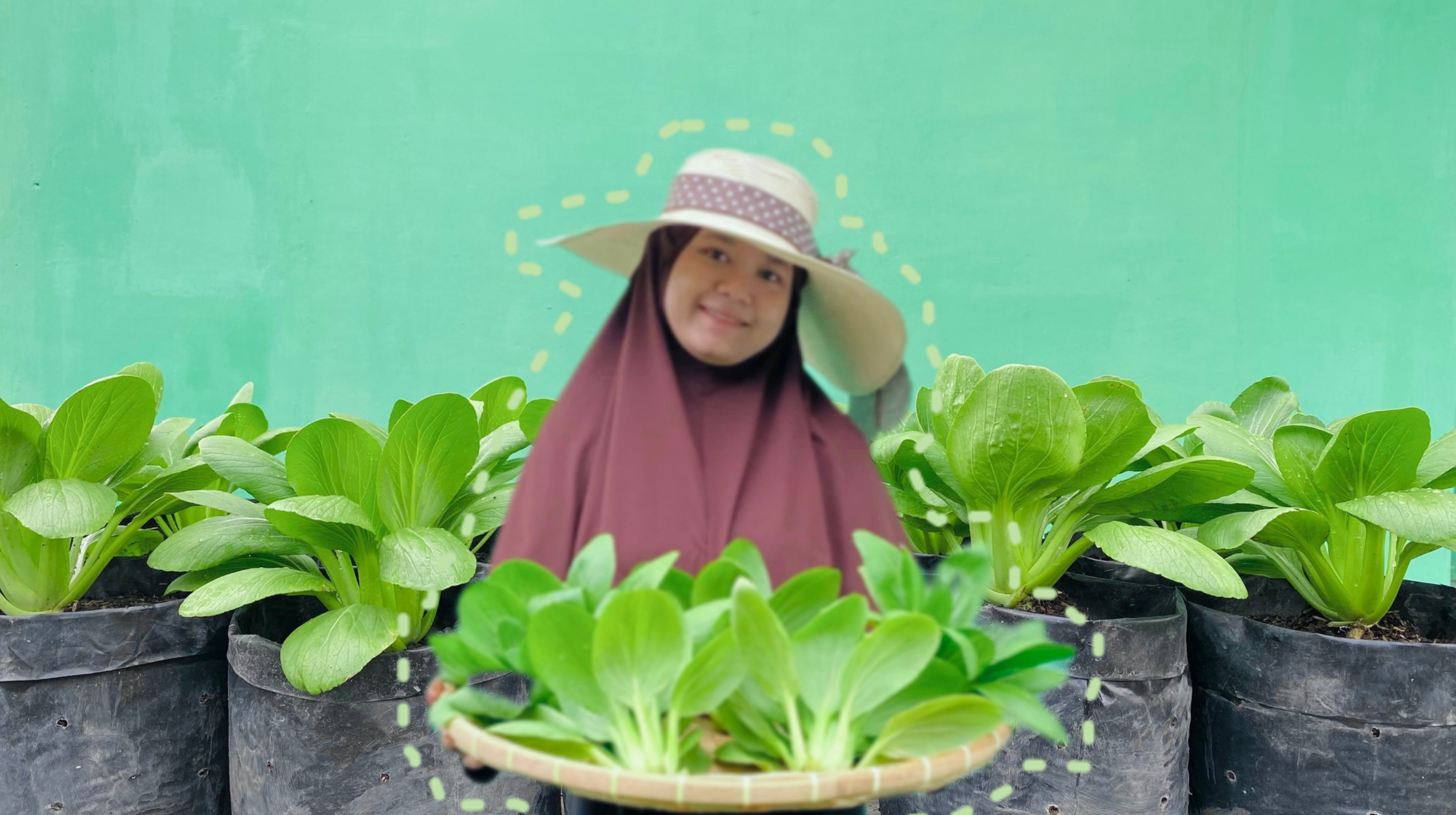
Gardening has never been easy for people today who have limited housing. You can only use the terrace of the house as the remaining empty space. But, if you have a big intention to garden, and gardening has become a hobby, then that's not a problem at all.
In Indonesia, residential houses are now only small areas. Here it is popular to use polybags as a planting medium. This is because it allows people to plant and place plants in the desired position, especially by placing them on the terrace of the house. Of course, it is more possible than having to make raised bags.
Well, I can't believe that now I have entered my 7th month of gardening activities. The things I prioritize so that my garden becomes productive is to plant the types of vegetables and herbs that I like and often use in our family.
Apart from that, there is another important thing that I am considering. Of course, growing vegetables that are easy to care for and harvest faster is my priority. For example, this time, I will show you how to grow my favorite vegetable, namely pak choy or bok choy.
If you are a long time follower of mine, you will have often seen me posting about Pak Choy. That's because I plant pak choy more often than other plants. Both in polybags and in raised beds. But for today, I will show you how I plant pak choy in polybags from start to harvest.
Planting Media Preparation
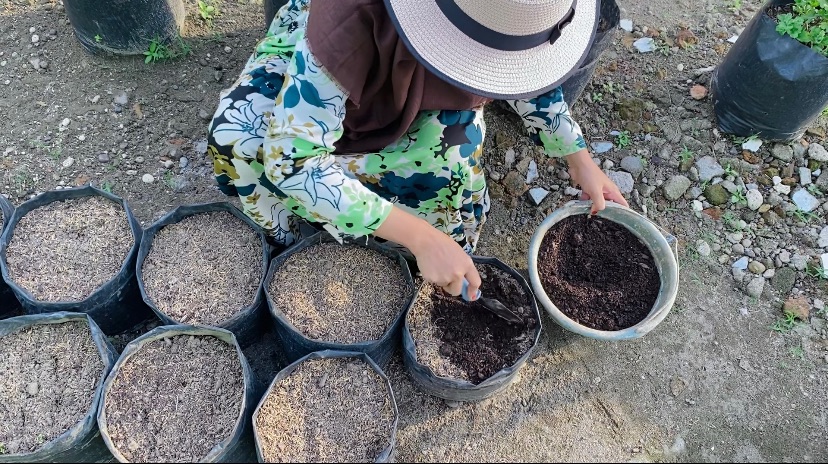
I use a mixture of soil, rice husks and manure as a planting medium. Because the use of polybag media is more limited, that's why we need manure for further nutrition. If we only use a raised bed, we can only use liquid organic fertilizer from kitchen organic waste, to care for this pak choy.
Meanwhile, the aim of using rice husks is to loosen the soil. So, later the stems and roots of the plant will not rot easily. Hard soil texture will only make the stems and roots of the plant feel hotter and rot easily.
Pak Choy Seedling Process
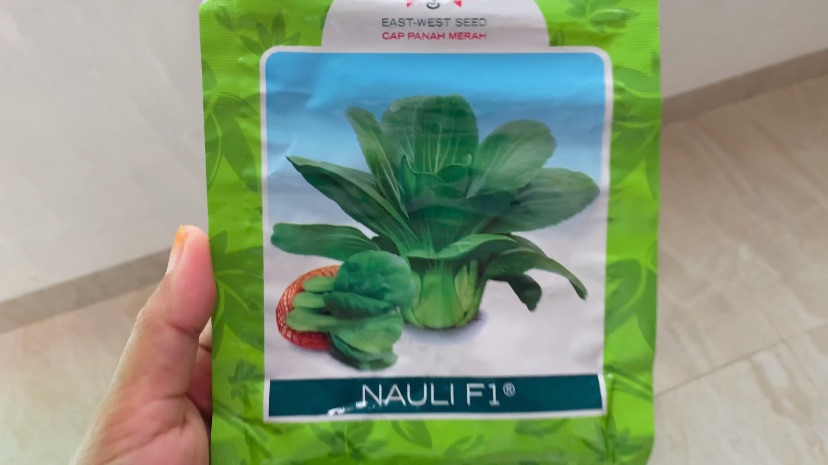
Pak choy is different from water spinach. If water spinach can be planted without sowing the seeds first, then pak choy requires sowing first. I used pak choy seeds in packaging like the one in the photo above.
It takes around 10-14 days for the pak choy seeds to become strong and ready to be transplanted into the next planting medium.

My pak choy seedlings are about 12 days old, and ready to be transplanted. Carefully remove the pak choy seeds from the seeding medium. I used a popsicle stick to help pop them out so as not to damage their roots.
Planting Process
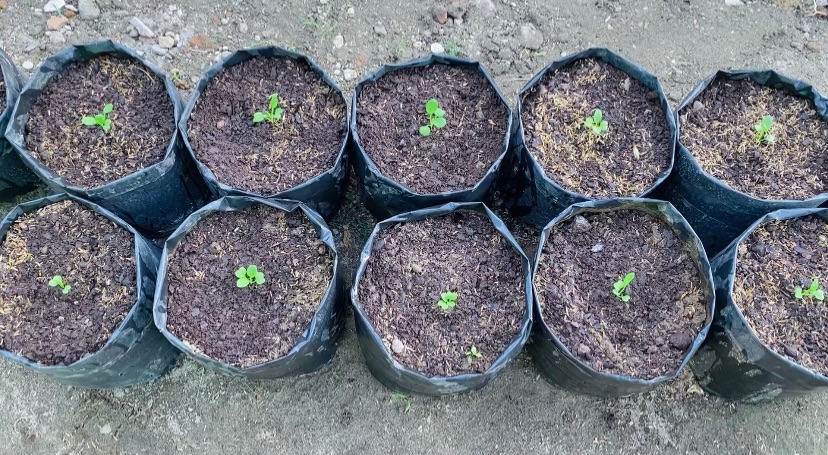
Do it slowly. Dig holes in all polybags, not too deep. Enough to bury the pak choy roots. Don't forget to water them after transplanting.
It is best to use a cover to reduce the intensity of the sun for several days after transplanting. Or, move the polybags to an area that is shady but still gets sunlight. This is because the small stems of pak choy are very fragile and can easily burn in the sun.
Pak Choy's care
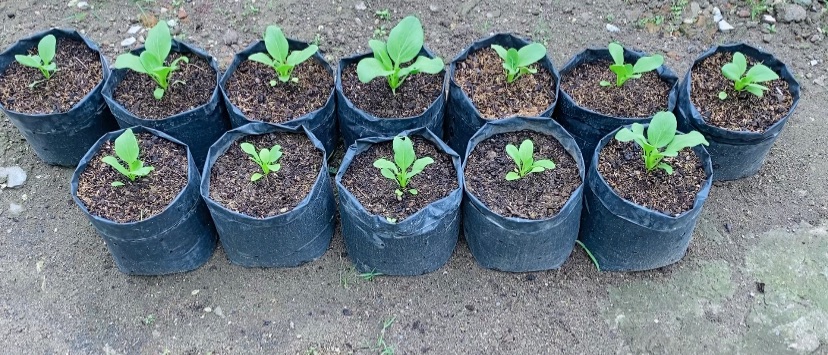
Starting a week after transplanting, liquid organic fertilizer can be given from composting kitchen waste. Provide liquid organic fertilizer once a week. Also, we can add manure after 2 weeks of transplanting. Just use a small amount per polybag but this one is an optional way.
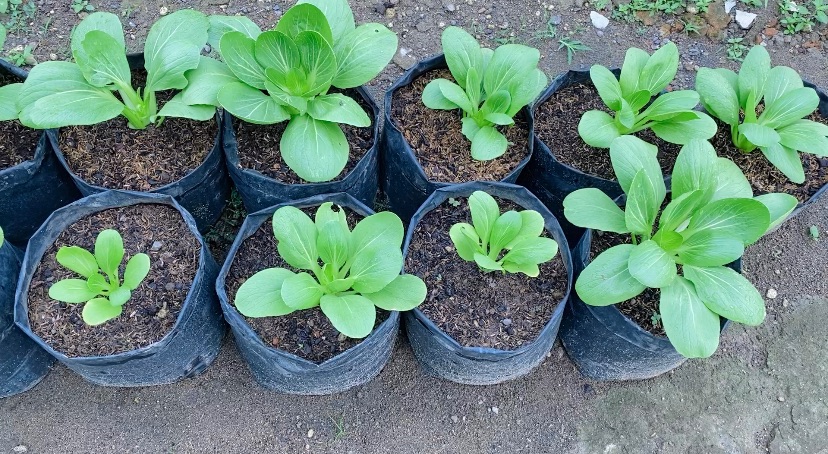
Slowly Pak Choy looks bigger. Although some of them have different sizes. Just like humans, even though they are the same age, their sizes still vary. No problem because it is normal. They can still be harvested simultaneously, or in stages according to your wishes.
Harvest Time
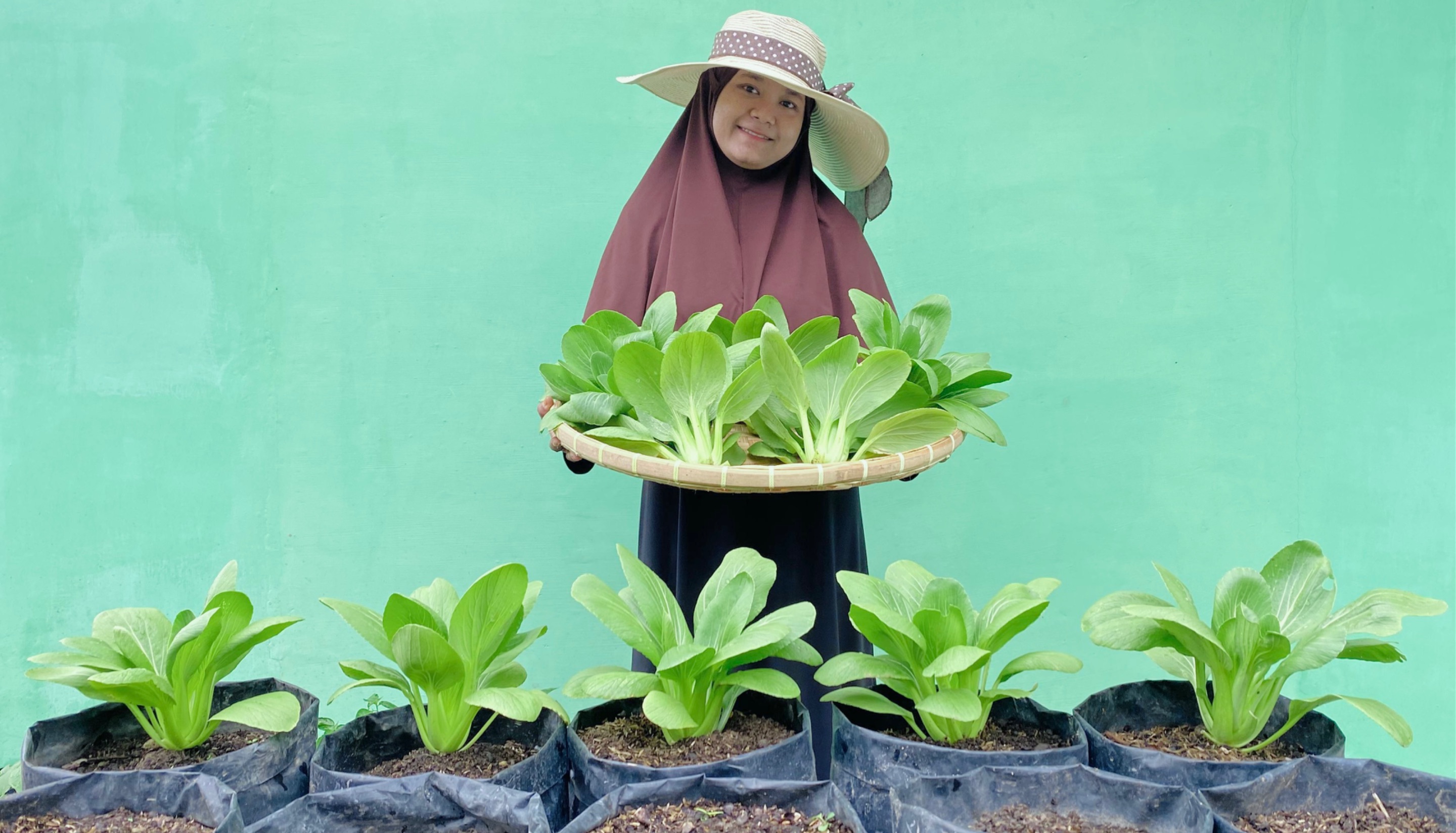
Pak choy harvest can begin at the age of 30 days after transplanting. We can harvest them by cutting off only their bottom leaves, and allowing their shoots to continue to grow into new leaves.
Or, we can remove the entire plant, if we want to replace the plant in the planting medium used. Make sure you let the used planting media go first, or dry the used planting media to remove fungus and bad bacteria.

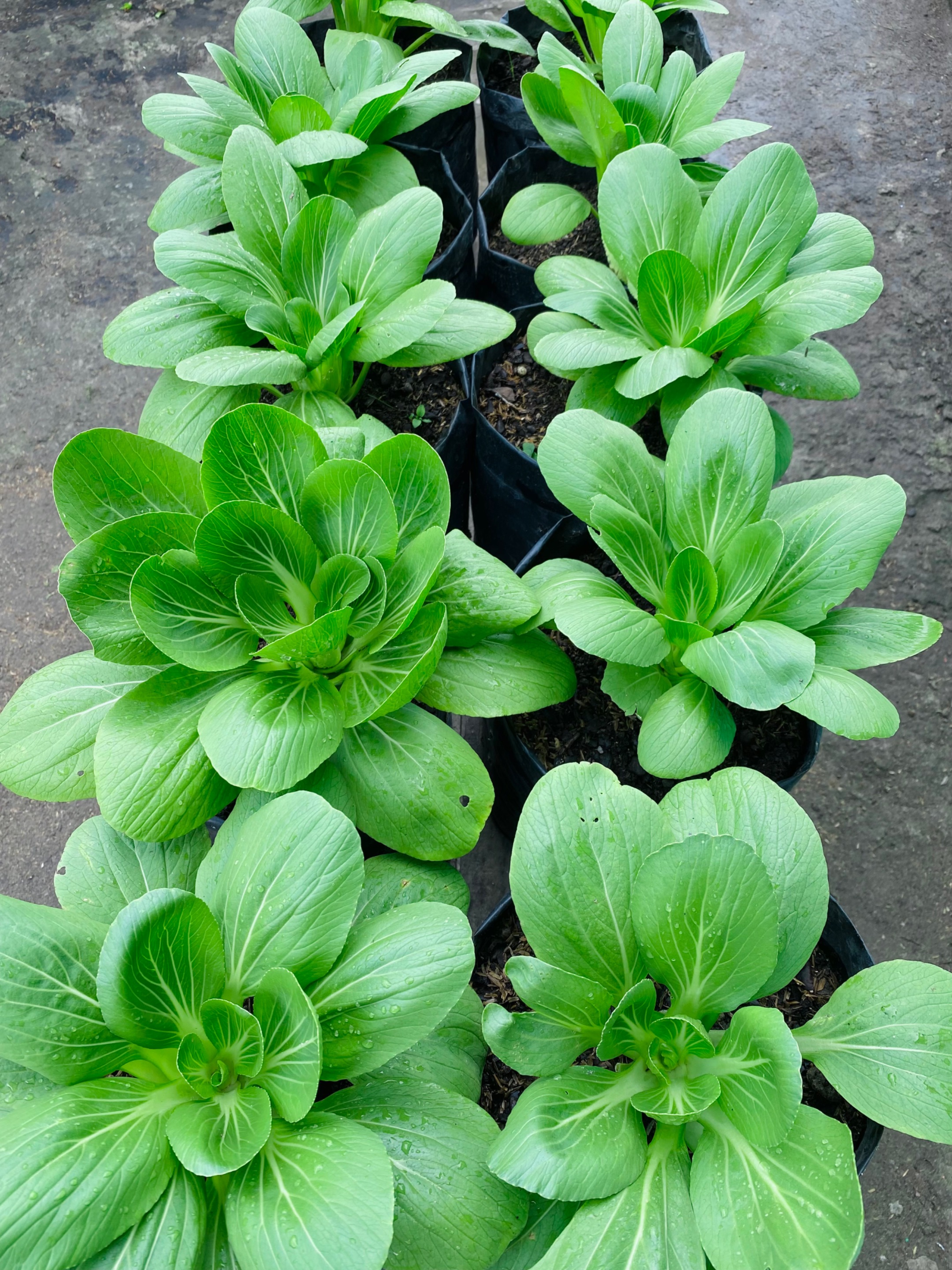
I harvest these pak choy in two stages. Of course, I don't forget to share it with my neighbors. Really, it feels really good to be able to share organic vegetables that I grow and care for myself with love.
You can see all the stages of how to plant pak choy from start to harvest in polybags in full on my Youtube Video which is available with several language subtitles. Enjoy! :)
Best Regards,
Anggrek Lestari
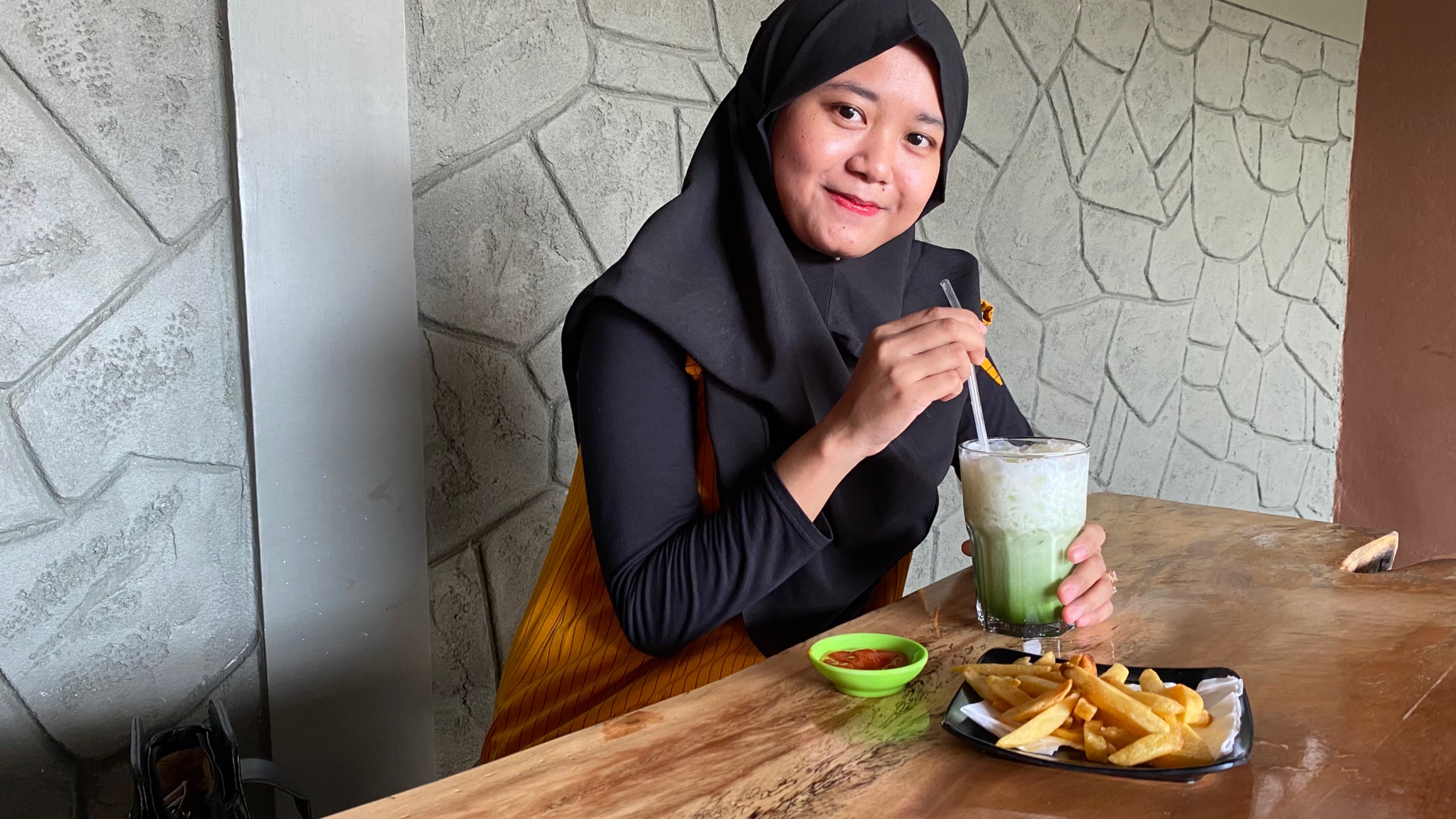
Anggrek Lestari is an Indonesian fiction writer who has published two major books. Now She is a full-time content creator. She has a goal to share life, poem, and food content that makes others happy and can get inspiration.
Contact Person: authoranggreklestari@gmail.com
Discord: anggreklestari#3009
Posted Using InLeo Alpha